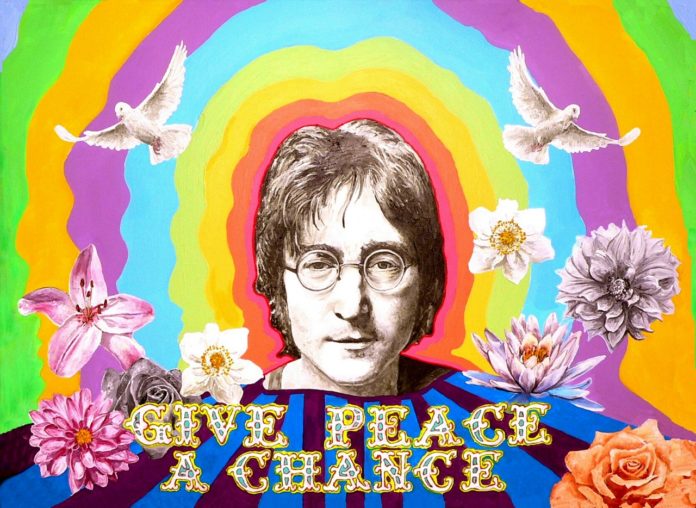![]()

My generation will probably never get over the breakup of the Beatles in 1970, but as the decade came to an end, at least we came to grips that they were never getting back together. While some of them contributed to each other’s solo albums, the rift was way too deep for a complete reunion.
Although the individual Beatles continued to make music after the breakup, John Lennon chose to go on hiatus after the birth of his son Sean in 1975, becoming a full-time father. After initially creating a mild furor with his decision to no longer perform or produce commercially released music, fans would not deny him his privacy and respected his decision. We still had plenty of John Lennon music to listen to.
Then during the summer of 1980, word began to seep out that Lennon and Yoko Ono were in a recording studio. Before you knew it, Double Fantasy was being released in October, restoring balance to the world again. A combination of six tracks each from John and Yoko initially disappointed Beatles fans who were hoping for an entire Lennon album, but you take what you can get, right?
The Lennon songs were wonderfully written and beautiful to listen to. He touched our hearts with “Beautiful Boy (Darling Boy),” “Just Like Starting Over” and “Woman.” He even answered the question as to what he had been doing for the last five years with “Watching The Wheels,” explaining that he was just tired and exhausted from being a Beatle and just needed to let it go. We all sympathized with him as we were growing older together. Many of us were just getting started in adult life and were ready for Lennon to take us along with him to the next step through his music. After all, he and the Beatles helped shape our lives.
And just like that, less than two months later, it was over.
As I sat alone in my living room on December 8, 1980, watching the end of the Monday Night Football game, Howard Cosell broke the news to an unsuspecting national audience in his famous staccato delivery. “An unspeakable tragedy, confirmed to us by ABC News. John Lennon, outside of his apartment on the west side of New York City, the most famous, perhaps, of all the Beatles, shot twice in the back, rushed to Roosevelt Hospital. Dead. On. Arrival.”
What did he say?
I was watching the Patriots kicker trot out onto the field to attempt a game winning field goal, but I thought I heard Howard say something about John Lennon. As I moved closer to the TV to hear better, I heard them talking about it. No doubt, John Lennon was gone.
There was no internet to confirm the horror. No Facebook, Instagram or Twitter. There were no social media platforms in which to share your grief. Just the telephone. So, I called my friend Bruce to ask him if he was watching the game, breaking the “never call after 9 p.m.” rule. My memories of the events from that evening are blurry, but we both shared the magnitude of the tragedy together, with tears and disbelief.
As a budding adult, I got my first real dose of reality—life was not fair. Here was a revered musician who never harmed a soul and only made the World a better place, gunned down in his prime for no good reason. The evening Mark Chapman decided to fire those shots, Lennon was returning from a recording session and decided to stop for a fan that wanted an autograph, just like he had probably done thousands of times. In shock and sadness, we felt the peace and love of the 1960s and 1970s was now gone.
But they say time heals, and while we are still saddened by Lennon’s untimely death, we can focus on his legacy of music and how he lived. I think he would have imagined it that way.
“You may say I’m a dreamer, but I’m not the only one. I hope someday you’ll join us and the world will live as one.”